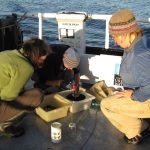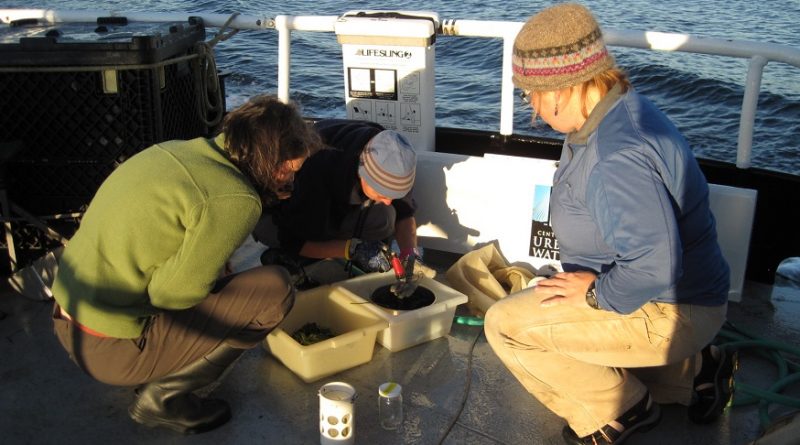The Environmental Impact of Micro-Plastics in the Ocean
Micro-plastics don’t sound like a large threat, but these tiny pieces of plastic are turning up in the digestion systems of living organisms. Researchers know that this is a major environmental concern. What they don’t know is how far up the food chain these micro-plastics travel, nor do they know the impact of this damage on sea life and the ecosystem.
In 2008, UWT’s very own Professor Julie Masura was asked to join a team put together by Dr. Joel Baker, and there her journey began. For the last few years she has been overseeing a team driven by undergraduates. This team has developed methods of sample collecting and measurements for evaluating the impact of micro-plastics in the ocean. Much of their work has been done in the Puget Sound, but other researchers have sent them samples from oceans nation-wide.
Masura, who specializes in sedimentology, was the perfect fit to mentor these students. “I have a group of 4-5 students annually” said Masura. She takes her students out to collect samples, and they spend hours in the lab sieving and sorting out the micro-plastics.
Julie Masura has allocated funding for her project through multiple sources, including the NOAA Marine Debris Program, JISAO (Joint Institute for the Study of the Atmosphere and Oceans), and the Chancellor Undergraduate Research Grant. Presently, the scope of her project involves developing transferable methods for collection and analysis to share with other groups. Their mission is to understand the location, distribution, and what’s driving the presence of these plastics in the ocean.
Micro-plastics can come from multiple sources, although PVC pipe, blue tarp shreds, Styrofoam, and other polyethylene/polypropylene products are sources, the primary source is what are commonly referred to as nurdles. These are the pre-production plastic pellets used in most plastic production. During transport, many fall out of containers and into the ocean.
With that being said, Masura reports that what puzzles her most is understanding the missing pieces in the data based on predictive models. She suggests that based on predictive models, more micro-plastics should be present than are currently accounted for in the research per capita.
“This raises a question,” said Masura, “Where are the micro-plastics going? In sediments? In a sink?” These are answers she hopes their research will provide in time, along with long-term effects on sea life and the ecosystem.
This vital research will continue, and has provided many study opportunities for undergraduate students. Equally as exciting is the fact that their long-term investment in the project has gained them notoriety in the science community.







